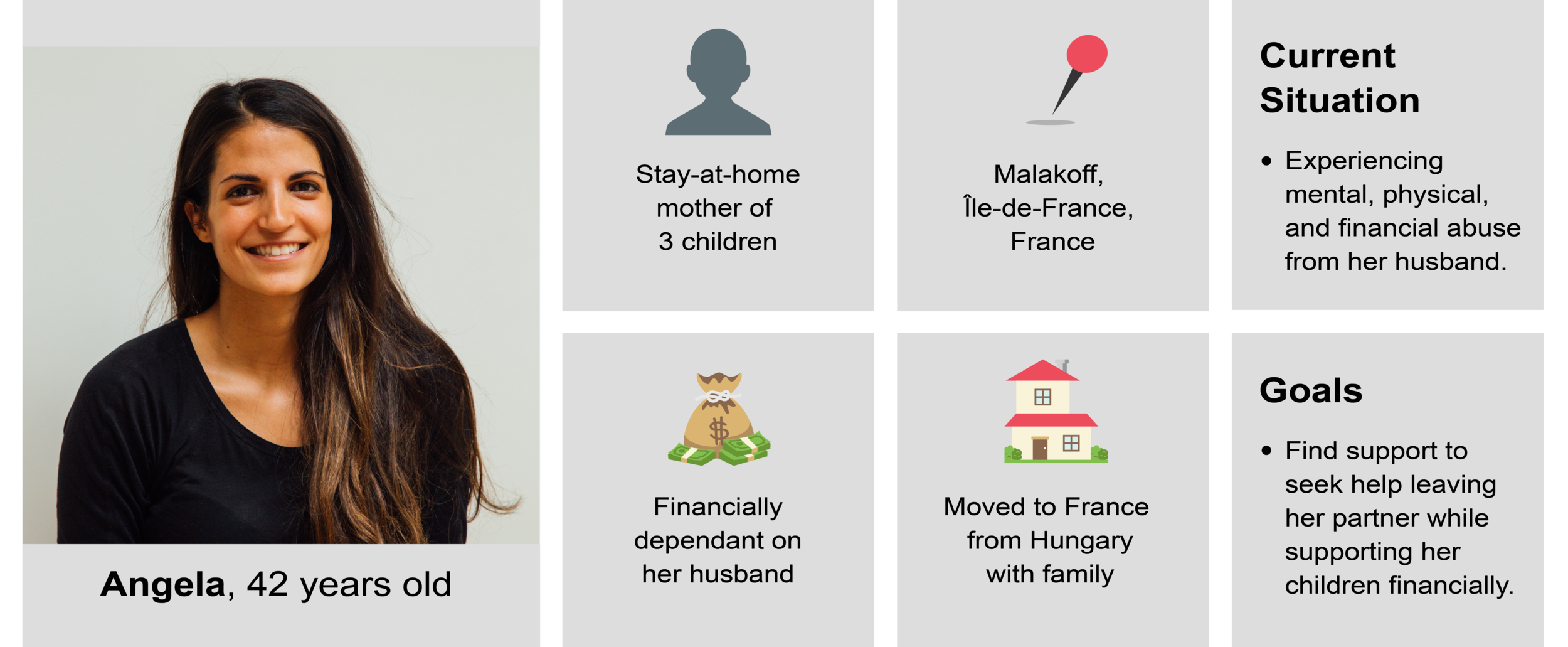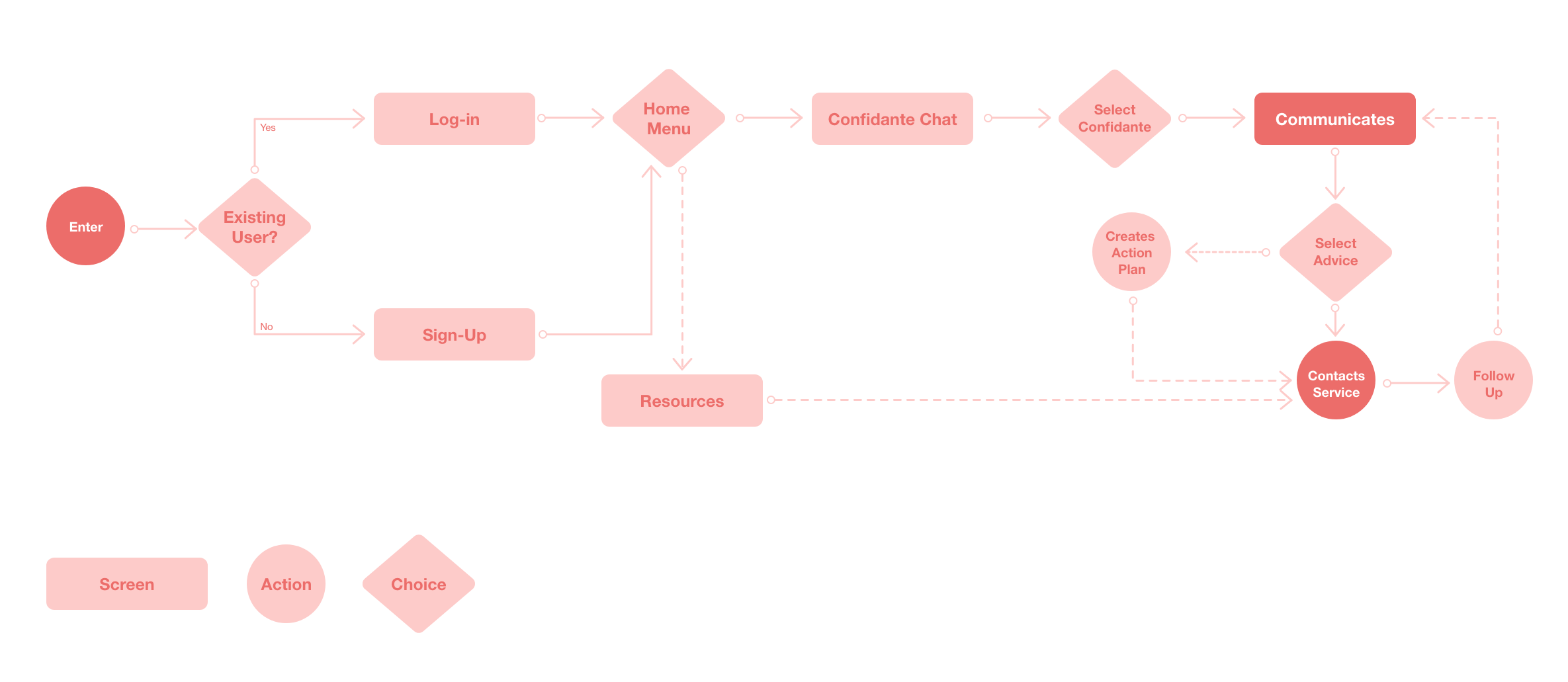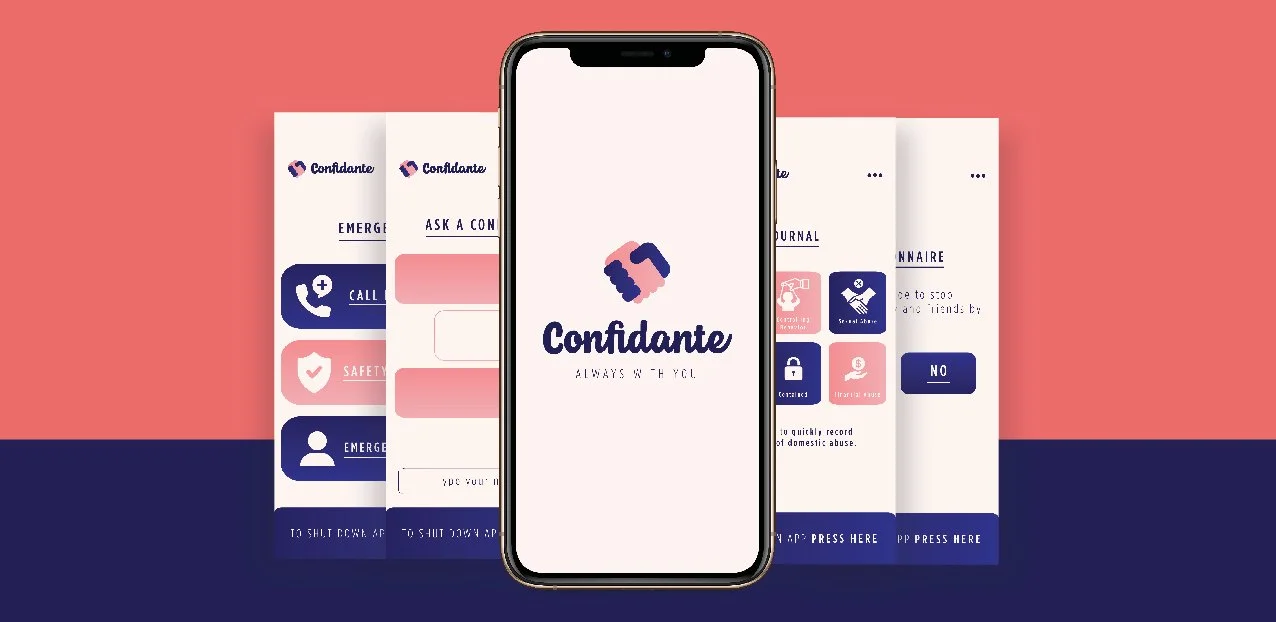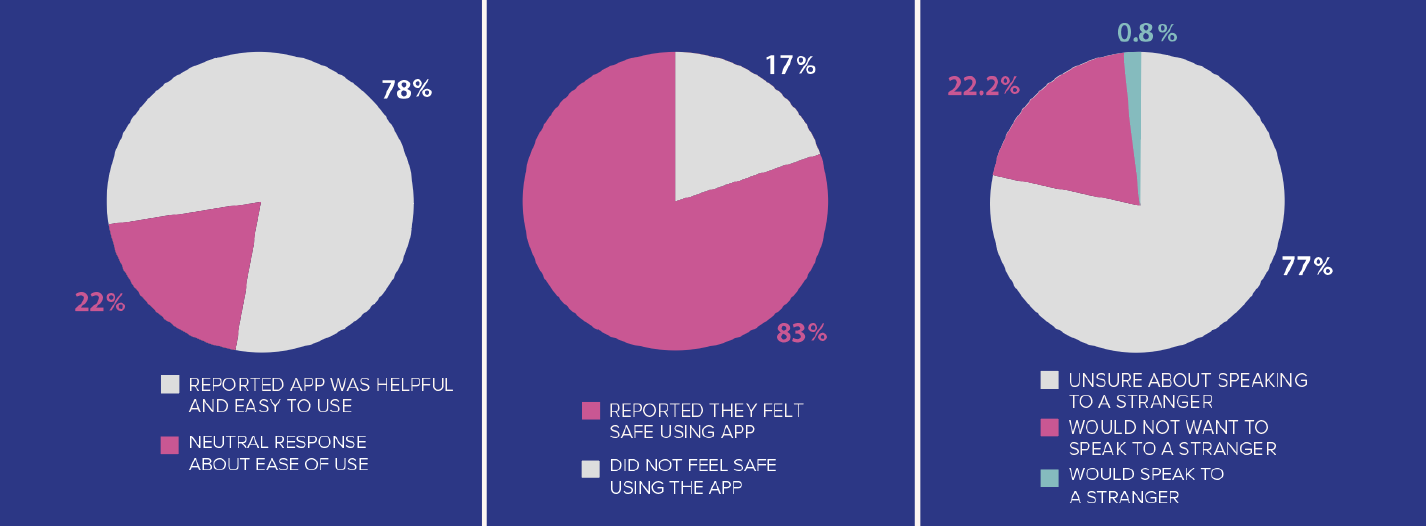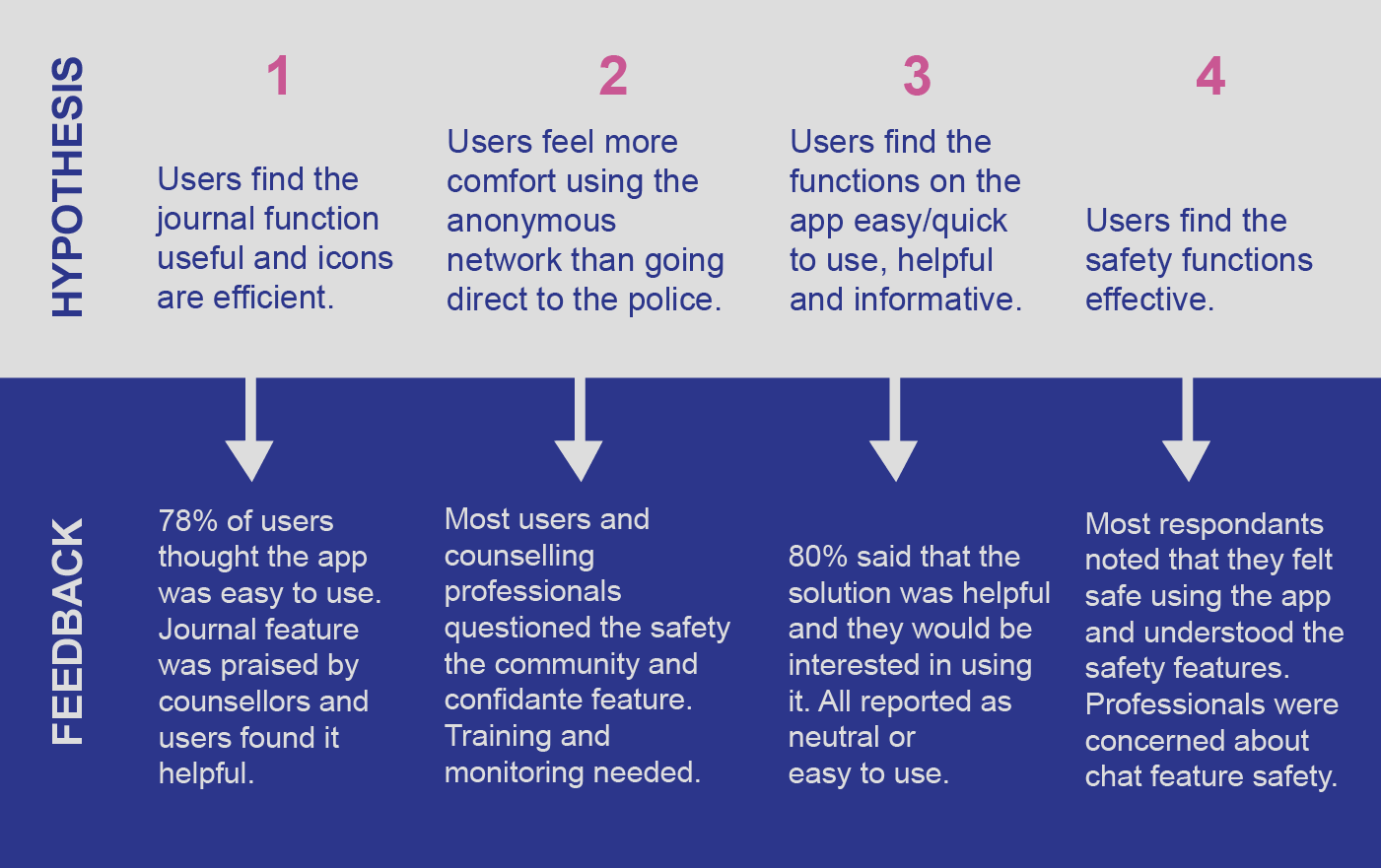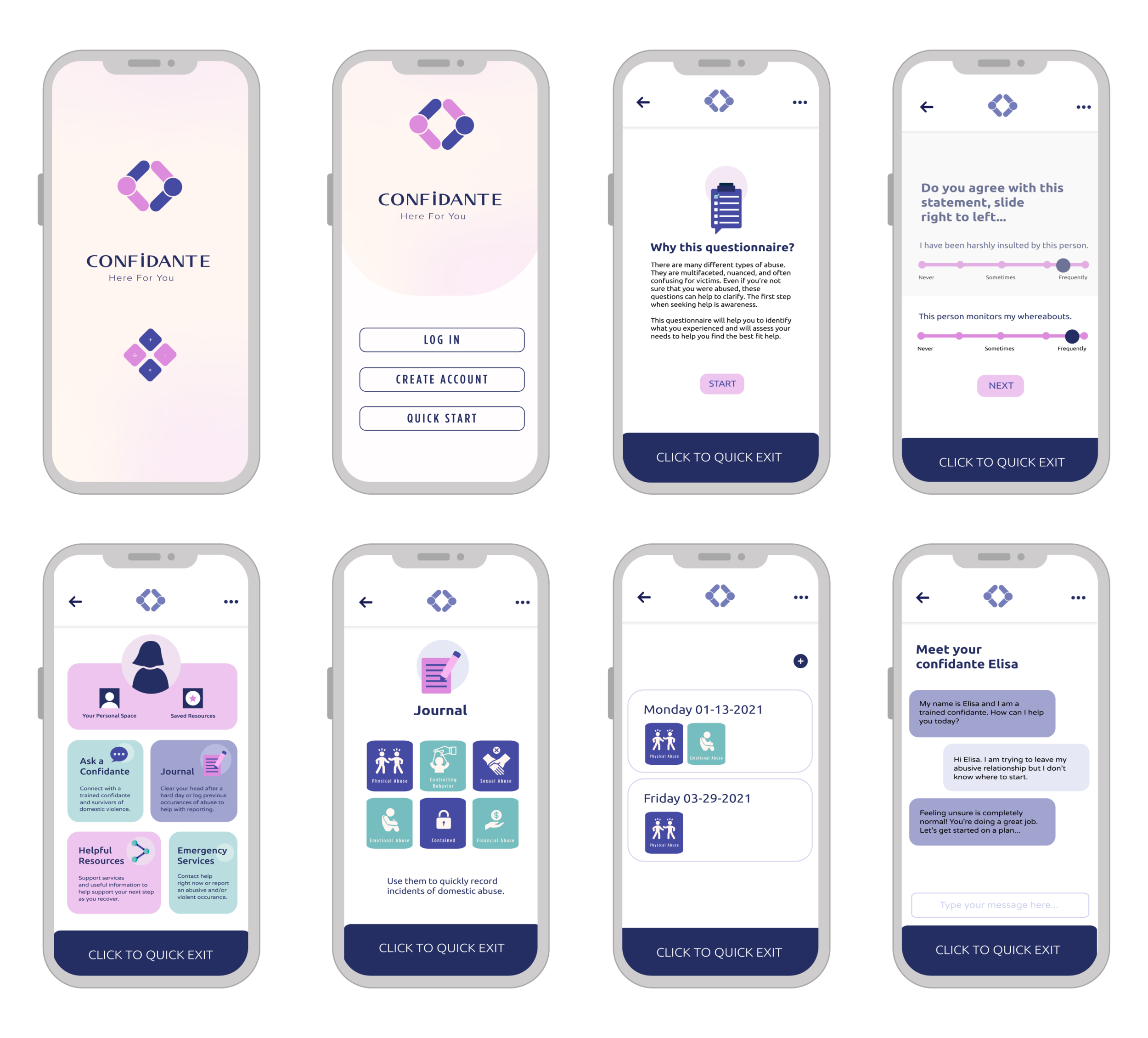
Overview
A team of 4 multidisciplinary designers, including myself, was tasked with identifying a problem that arose in Paris as a result of the COVID-19 pandemic. My team identified the problem of rising cases of domestic violence around the city, the shadow pandemic.
Confidante is the proposed solution developed over 5 months under supervision of MakeSense France, a social entrepreneurship incubator.
My Role
Background secondary research, primary ethnographic research by coordinating interviews, Final UI design, developing communications and presentation materials
Tools
Adobe Illustrator, XD, Photoshop, InDesign
My Design Process
Research
Problem Background
Research Methods
Insight Collection: Competitor Analysis & Interviews
Ideate
Target User Analysis
Wireframe
User Flow
Functioning prototype
Testing
User feedback
Updated proposed solution
Conclusion
Research
Background
Domestic violence reports increased by 40% during the first confinement and 60% during the second confinement in France alone. This was based on calls received by the dedicated domestic violence telephone line, 3919, managed by the National Federation of Solidarity Women (FNSF).
However, in general, this number likely represents only 20% of total cases as stigma and fear of repercussion prevents most victims from reporting violence. Non-francophone, immigrant women in France are particularly vulnerable as they are even more isolated from family and social groups.
How might we help victims of domestic violence, particularly non-francophone immigrant women in France, access support services during confinement?
Research Methods
our initial research of the problem and insight collection included:
Collecting insights from written reports and news
Listing existing solutions that provide support to victims
Interviewing victims of domestic violence
Interviewing representatives of existing solutions
Interviewing representatives of national support initiatives and established journalists such as Astrid de Villaines
Insight Collection
I coordinated the interviews of individuals who were victims of domestic violence, some of whom had reported it and some had not. I also interviewed a journalist who has researched and written extensively on the topic of violence against women in France to conclude insight my insight collection. We also reviewed and compared some existing organizations focusing on providing help to domestic violence victims. We focused primarily on how they could be reached by individuals and the interventions that they provided.
Our primary goal was to identify the motivations of victims of domestic violence in seeking help or not seeking help, how they would go about it and the common barriers in their way. We used the insights collected to identify the best approach to providing a solution and the target users of our services. This is outlined in the next section.
Existing Solutions
These are four main existing solutions that we identified.
Strengths
Readily available and emergency phone services
There are investments being made towards supporting victims of violence, particularly women
These solutions focus on awareness campaigns and disseminating information to keep the general public informed
Opportunities
There are many services available but they are siloed and fragmented unless there is an incidence of emergency
Victims of domestic violence are not provided with many options unless the situation escalates, at which point it might be too late
There is a lot of focus on generalized awareness but not much targeted outreach to potential victims
Information is lacking for non-francophone and immigrant women
Interviews
Barriers to Help
Noteworthy quotes from selected interviews.
We identified four common themes that were mentioned by most of the women interviewed regarding their difficulties seeking help or finding the help they needed.
Ideate
Target User Insights & Analysis
Constraints
Taking care of children financially without her husband.
Stigmatization of domestic violence.
Isolation from family and friends, being in a new country.
As a recent immigrant, her level of French is basic.
No close social support or network in her daily life.
Needs
Access to the right services in France that can provide help to leave or manage an abusive situation.
Guidance to find a service that is tailored to her practical needs as well.
Support network; place to go to ask for help without handling language barriers or paperwork with the authorities.
Emotional and psychological support to affirm her experiences.
Brainstorm & Low Fidelity Wireframe
After outlining target users and analyzing their journeys to seeking help, we began to brainstorm a potential solution that would address their needs and solve their pain points.
We decided that a digital product, an app, would be the best solution to reach as many individuals in need as possible especially within the pandemic where external interactions were limited.
The initial proposed solution was a discrete app that would be disguised within a phone so as not to be detected by abusers. It would provide a place for individuals to track their experiences in order to help with reporting, connect them with a support network, and consolidate available resources for them based on answers to a questionnaire.
User Flow
How would a user determine the best course of action or service for their needs using this app?
Early Prototype
Finally, we created an early prototype and used the website InVision to animate the features so that it was partially functional. We shared this prototype with potential users along with a survey to receive their feedback to improve the solution. This will be explored in the next section.
Testing
User Feedback
The testing phase included a partially functional prototype of the app where users could move through the functions of the app. A survey form was provided for them to give their feedback anonymously. The survey asked questions about how easy it was to navigate through the app, its most useless and least useful functions, and and how effective it was for providing safe access to information. An overview of these results are summarized in the image according to our hypothesis.
In addition, individuals who experienced domestic violence as well as abuse therapists and counsellors were interviewed about their impression of the app.
As a result of testing, we changed the support network function. Rather than providing the option of a public forum, we limited it only to one-on-one conversations with confidantes. We were also implored by counsellors to ensure that all confidantes were thoroughly trained which reduced our intention of allowing volunteers to become confidantes.
Finally, I updated the colours, logo, and design of the app interface.
How did feedback change the solution?
Safety: According to feedback, the app was updated to include more safety features such as a passcode for the journal and other features.
Follow-Up: More thorough abuse questionnaire which would a tailored follow-up guide for users based on their response.
Confidante Training: The chat function which connects users with a confidante would need to be monitored for safety and confidantes would be thoroughly trained and compensated to properly serve users.
Conclusion
As a pedagogical project with strict time constraints, the design process was concluded after the first round of feedback. The research and finding were shared with relevant actors in the MakeSense network to contribute to new or existing solutions.











